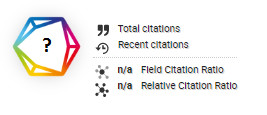Risk Assessment and Detection of Fraudulent Claims in Insurance Systems with Machine Learning Approaches
DOI:
https://doi.org/10.46984/sebatik.v28i2.2522Keywords:
Fraud Detection, Insurance Systems, Machine Learning, Random Forest, Artificial Neural NetworksAbstract
Fraudulent insurance claims pose a significant challenge to the sustainability and efficiency of insurance systems, resulting in substantial financial losses and eroding trust between insurers and policyholders. The complexity and volume of modern data make traditional fraud detection methods, such as manual assessments, increasingly ineffective. This study investigates the application of machine learning approaches, including Random Forest and Artificial Neural Networks (ANN), to detect fraud in insurance claims. Using a structured methodology, models were trained on historical claim data and evaluated using metrics such as accuracy, F1-score, recall, and precision. The Random Forest algorithm achieved an accuracy of 94%, while the ANN demonstrated superior performance on controlled datasets. Feature importance analysis identified key predictors, including claim amount and submission frequency, offering actionable insights for fraud prevention strategies. The integration of machine learning into claims management systems provides a scalable, accurate, and cost-effective solution to combating fraud. Future research will focus on testing with larger datasets and exploring hybrid approaches to enhance robustness and adaptability.
References
Apicella, A., Isgrò, F., & Prevete, R. (2024). Don’t Push the Button! Exploring Data Leakage Risks in Machine Learning and Transfer Learning. https://ssrn.com/abstract=4733889
Asgarian, A., Saha, R., Jakubovitz, D., & Peyre, J. (2023). AutoFraudNet: A Multimodal Network to Detect Fraud in the Auto Insurance Industry. https://doi.org/10.48550/arXiv.2301.07526
Belhadi, A., Abdellah, N., & Nezai, A. (2023). The Effect of Big Data on the Development of the Insurance Industry. Business Ethics and Leadership, 7(1), 1–11. https://doi.org/10.21272/bel.7(1).1-11.2023
Benalcazar, D., Tapia, J. E., Gonzalez, S., & Busch, C. (2023). Synthetic ID Card Image Generation for Improving Presentation Attack Detection. IEEE Transactions on Information Forensics and Security, 18, 1814–1824. https://doi.org/10.1109/TIFS.2023.3255585
Binsar, F., Eryanto, E., Wahyudi, I., Sugandi, Y., & Suroso, J. (2020). Risk of Invalidation of Data in Hospital Information Systems in Indonesia. 777–782.
Bockel-Rickermann, C., Verdonck, T., & Verbeke, W. (2023). Fraud analytics: A decade of research. Expert Systems with Applications, 232, 120605. https://doi.org/10.1016/j.eswa.2023.120605
Gangadhar, K. S. N. V. K., Kumar, B. A., Vivek, Y., & Ravi, V. (2022). Chaotic Variational Auto Encoder based One Class Classifier for Insurance Fraud Detection. https://arxiv.org/abs/2212.07802
Johnson, J. M., & Khoshgoftaar, T. M. (2023). Data-Centric AI for Healthcare Fraud Detection. SN Computer Science, 4(4), 389.
Kofi Immanuel Jones, & Swati Sah. (2023). The Implementation of Machine Learning in The Insurance Industry with Big Data Analytics. International Journal of Data Informatics and Intelligent Computing, 2(2), 21–38. https://doi.org/10.59461/ijdiic.v2i2.47
Kumaraswamy, N., Markey, M. K., Ekin, J. C., Barner, F. ;, & Rascati, K. (2022). Healthcare Fraud Data Mining Methods: A Look Back and Look Ahead. 19(1).
Nabrawi, E., & Alanazi, A. (2023). Fraud Detection in Healthcare Insurance Claims Using Machine Learning. Risks, 11(9). https://doi.org/10.3390/risks11090160
Nguyen, V. B., Dastidar, K. G., Granitzer, M., & Siblini, W. (2022). The Importance of Future Information in Credit Card Fraud Detection. http://arxiv.org/abs/2204.05265
Óskarsdóttir, M., Ahmed, W., Antonio, K., Baesens, B., Dendievel, R., Donas, T., & Reynkens, T. (2022). Social Network Analytics for Supervised Fraud Detection in Insurance. Risk Analysis, 42(8), 1872–1890. https://doi.org/10.1111/risa.13693
Sathisha, H. K., & Sowmya, G. S. (2024). Detecting Financial Fraud in the Digital Age: The AI and ML Revolution. Future and Emerging Technologies in AI & ML, 3(2), 61–66.
Shekhar, S., Leder-Luis, J., & Akoglu, L. (2023). Unsupervised Machine Learning for Explainable Health Care Fraud Detection. http://www.nber.org/papers/w30946
Talukder, Md. A., Hossen, R., Uddin, M. A., Uddin, M. N., & Acharjee, U. K. (2024). Securing Transactions: A Hybrid Dependable Ensemble Machine Learning Model using IHT-LR and Grid Search. https://arxiv.org/abs/2402.14389
Tatineni, S., & Mustyala, A. (2024). Enhancing Financial Security: Data Science’s Role in Risk Management and Fraud Detection. ESP International Journal of Advancements in Computational Technology (ESP-IJACT), 2(2), 94–105.
Vo Hoang, K., Anh, C., & Thuan, N. (2023). Detecting Fraud Transaction using Ripper Algorithm Combines with Ensemble Learning Model. International Journal of Advanced Computer Science and Applications, 14. https://doi.org/10.14569/IJACSA.2023.0140438
Zanke, P. (2023). AI-Driven Fraud Detection Systems: A Comparative Study across Banking, Insurance, and Healthcare. Advances in Deep Learning Techniques, 3(2), 1–22. https://thesciencebrigade.com/adlt/article/view/182
Zhang, H., Hong, J., Dong, F., Drew, S., Xue, L., & Zhou, J. (2023). A Privacy-Preserving Hybrid Federated Learning Framework for Financial Crime Detection. https://arxiv.org/abs/2302.03654
Downloads
Published
How to Cite
Issue
Section
License
Copyright (c) 2024 Mario Sutardiman, Dyah Ayu Arditya, Jarot S Suroso

This work is licensed under a Creative Commons Attribution 4.0 International License.
Authors retain all their rights to the published works, such as (but not limited to) the following rights; Copyright and other proprietary rights relating to the article, such as patent rights, The right to use the substance of the article in own future works, including lectures and books, The right to reproduce the article for own purposes, The right to self-archive the article








